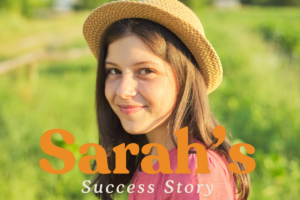
Creating a Flexible Schedule
- Posted by Sandra D
- Categories Dyslexia, Multisensory, Orton-Gillingham
- Date February 13, 2025
- Comments 0 comment

Creating a Flexible Schedule with Our Dyslexia Intervention Program
Embarking on an educational journey with a child who has dyslexia can be both rewarding and challenging. Our Dyslexia Intervention Program, with a Student Workbook available on Amazon and the Teacher Guide as an eBook, offers a comprehensive guide to support your child’s learning. A key component of success is establishing a flexible schedule that accommodates your child’s pace and needs. This article introduces strategies for creating such a schedule, ensuring each lesson is effective and engaging.
Structuring Your Lessons
Each activity in the schedule comes with a suggested timeframe. To keep the learning dynamic and ensure your student remains engaged, it’s not necessary to cover all sounds, words, or sentences in each section.
Let’s explore how we can adjust each section of a Monday lesson.
Short Vowel Posters typically take around 2-3 minutes. Initially, introducing this might take a bit more time, as reflected in our Practice Lesson. Once the technique is familiar, both you and your child should be able to complete it within 2-3 minutes.
Sound Cards also align with a 2-3 minute timeframe. In the initial lessons, aiming for this time might mean not covering all sound cards. During this phase, consider setting a 3-minute timer and observing how many cards are covered. As your child masters more sounds, you can gradually incorporate all of them.
Phonemic Awareness Drill is a brief 2-3 minute activity. In the first week, after explaining the process, you might only practice with a few words. With consistent practice, your child’s speed will naturally improve.
Introducing a Concept forms a crucial foundational skill. Allocating 3-5 minutes to introduce a new skill is optimal. Skipping this activity isn’t recommended, as the week’s activities build upon this new skill.
Lesson Activities are designed for 3-5 minute slots and offer practice for new material. Each activity includes additional words for practice. If time is limited, consider omitting some words, particularly when your student grasps the concept and is ready to proceed.
Word Reading should take around 3-5 minutes. You might complete just the first column in the given time and then move on to nonsense words. If progress is quicker, covering two or more columns is feasible. Nonetheless, including some nonsense words each time aids in honing word decoding skills.
Sentence Reading also fits within the 3-5 minute range. While each reading section consists of 8 sentences, feel free to select a few if time constraints apply. Remember, the pace should be tailored to your student’s optimal learning speed.
Quick Drill Encoding is another swift exercise, requiring 2-3 minutes. Initially, the focus is on identifying sounds on the tile mat. Although there’s a list of sounds, completing them all might not be feasible due to time constraints. It’s perfectly acceptable to cover a portion, with subsequent weeks resulting in quicker completion.
Spelling using the tile mat for words provides hands-on learning but might require adjustment time. Allocating 2-3 minutes might mean starting with only a few words initially, and gradually expanding as familiarity grows.
Writing Words and sentences demands more time, approximately 8-10 minutes. In the initial stages, this might encompass spelling 3 or 4 words and composing 2 or 3 sentences. Gradually progress to more words and sentences.
Editing should ideally fall within the 3-5 minute timeframe. As the CHOPS method becomes routine, the process should quicken. In the initial stages, beginning with editing one sentence might be prudent. If time allows, editing more sentences can be integrated.
Read a Story & Comprehension also requires a substantial timeframe, approximately 10-15 minutes, and should be prioritized each week. This activity synthesizes newly acquired concepts, providing a space for both you and the student to connect and understand the material. Skipping or abbreviating this activity is discouraged for optimal learning.
Customizing Your Learning Schedule for Success
Embrace Flexible Start Days: While we’ve designated the lesson day as Monday, don’t hesitate to choose a day that suits your schedule better. Perhaps Monday is occupied with piano lessons, but Wednesday aligns more harmoniously. Feel empowered to tailor your start to align with your rhythm.
Optimize with 3-Day Weeks: While an ideal practice week encompasses 5 days, adapting to a 3-day schedule is perfectly feasible. Strategically blend lessons for efficiency. Maintain the integrity of your Monday session, then amalgamate Tuesday and Wednesday into a focused 60-minute day. Similarly, weave Thursday and Friday into another enriching 60-minute session.
Each Week Can Be Extended to 2 Weeks: Recognize the abundance within each week’s content. If time is a consideration, stretching one week’s material over two can yield significant benefits. Halving word and sentence lists accommodate this approach. For students who need additional practice to master skills and build neural pathways. Repeating stories and sorting activities can amplify the learning experience.
Conclusion: Empowering Your Child’s Learning Journey
Creating a flexible schedule with our Dyslexia Intervention Program ensures that learning is both effective and enjoyable. By tailoring the pace to your child’s needs, you foster an environment of growth and confidence. Explore our program Student Workbook on Amazon and our Teacher Guide as an eBook to start this transformative journey today. With dedication and adaptability, you can unlock your child’s full potential, turning challenges into triumphs.

You may also like

Book Review: Did You Say Pasghetti?

Book Review: One in Five

